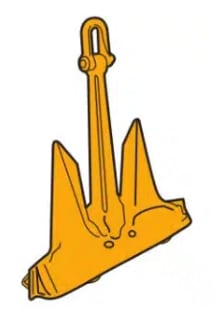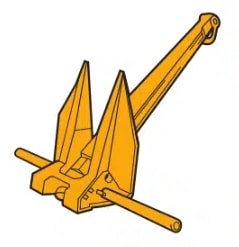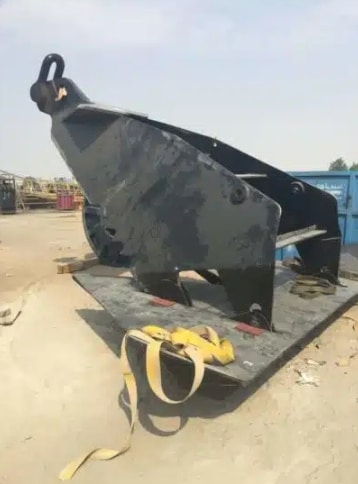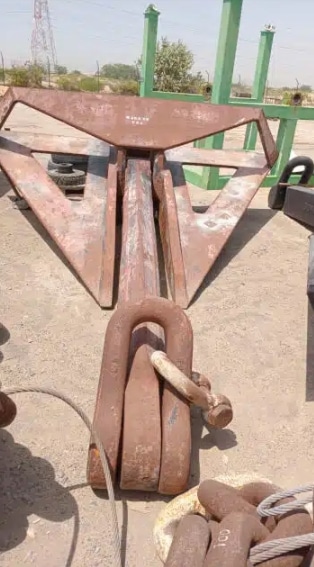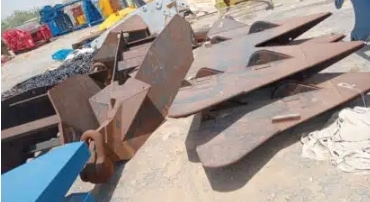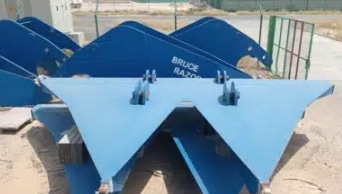Your cart is currently empty!
Stockless Anchors to High Holding Power Anchors: A Buyer’s Guide
Anchors are critical components in maritime operations, ensuring the stability and safety of vessels in various sea conditions. Whether you’re outfitting a commercial ship, a yacht, or an offshore rig, understanding the types of and their specific applications is essential for making informed procurement decisions. In this guide, we highlight the two most popular categories of anchors: stockless anchors and high holding power (HHP) anchors, helping buyers select the right choice for their needs.
Understanding Stockless Anchors?
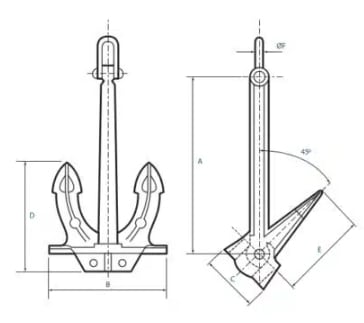
What Are Stockless Anchors?
Stockless anchors are a widely utilized type of anchor in the maritime industry, renowned for their efficiency, versatility, and ease of handling. Unlike traditional stocked anchors, which have a large crossbar or “stock” for stability, these feature a streamlined design without a stock making them particularly suitable for modern vessels that require compact, easily stowable equipment. They consist of a shank and flukes, allowing for easy storage and deployment.
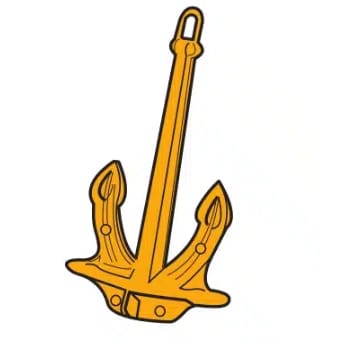
Their design allows them to dig into the seabed effectively while also being easier to retrieve. Their flukes pivot freely, enabling them to adapt to various seabed conditions such as sand, mud, or clay. This versatility makes them an ideal choice for a broad range of ships, from cargo vessels, tankers and naval ships. One of the primary advantages of stockless anchors is their efficiency in holding power relative to their weight. Their construction—usually from high-grade steel—ensures durability, even in harsh maritime environments. Additionally, their design simplifies the anchoring and weighing process, reducing the time and labor required for deployment.
Despite their advantages, the effectiveness of stockless anchors largely depends on the seabed type and anchoring technique. While they excel in soft seabeds, they may be less effective on rocky or uneven terrain. As a result, careful consideration of anchoring requirements is essential when choosing for a vessel. Advantages of Stockless Anchors
- Ease of Handling: Their compact design makes them easy to store in anchor pockets or hawse pipes.
- Versatility: Suitable for a variety of seabeds, including mud, sand, and gravel.
- Durability: Built to withstand the wear and tear of daily maritime operations.
Common Applications
- Cargo ships
- Tankers
- Bulk carriers
Exploring High Holding Power (HHP) Anchors.
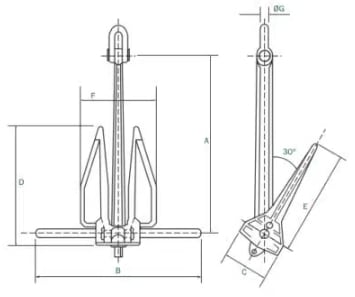
What Are High Holding Power Anchors?
High holding power anchors are engineered to provide exceptional grip and stability, even in extreme conditions. They are designed with larger flukes or innovative shapes to dig deeper into the seabed, offering a stronger hold. Designed to maximize holding capacity while minimizing weight, these are a preferred choice for large ships, oil rigs, and floating structures.
The key to their effectiveness lies in their design. HHP anchors feature flukes and shanks optimized to dig deep into seabed materials such as sand, mud, or clay. This increases resistance against forces from wind, current, and waves. Compared to conventional anchors, High Holding Power anchors provide twice the holding power relative to their weight, making them a practical and cost-efficient solution. Their lightweight nature not only facilitates easier handling and deployment but also reduces fuel consumption during transportation, aligning with sustainability goals in maritime operations. Popular HHP anchor types include the Danforth, Delta, and Pool TW, each suited for specific seabed conditions and operational needs.
Regulatory bodies, including classification societies like DNV or ABS, often require High Holding Power anchors to pass stringent performance tests. These include penetration depth, holding power, and retrieval ease, ensuring they meet safety standards for various marine applications. Advantages include:
- Enhanced Stability: Ideal for anchoring in adverse weather and strong currents.
- Efficient Design: Provides greater holding capacity relative to their weight.
- Versatile Use: Effective across various seabed types, including soft mud and sand.
Common Applications
- Offshore rigs
- Large commercial vessels
- Yachts and luxury boats
Key Factors to Consider When Buying Anchors
When choosing between stockless and HHP anchors, consider the following factors:
1. Vessel Type
- Large commercial ships benefit from stockless anchors due to their practicality and compatibility with anchor-handling systems.
- Smaller vessels or those requiring maximum stability in extreme conditions may opt for HHP anchors.
2. Seabed Conditions
- Stockless anchors work well on mixed or unpredictable seabeds.
- HHP anchors excel in soft or challenging seabeds, where a stronger grip is required.
3. Weight vs. Holding Power
- Stockless anchors rely more on their weight for holding power.
- HHP anchors achieve similar or greater holding power with less weight, optimizing storage and handling.
4. Regulatory Requirements
- Check industry standards, such as IMO regulations, for compliance. HHP anchors often meet stricter standards for specific operations.
5. Budget Considerations
- While stockless anchors are often more cost-effective, HHP anchors provide better value for applications demanding higher performance.
Top Recommendations for Buyers
Here are some of our most trusted stockless and HHP anchor types available:
Stockless Anchors
- Hall Anchor: The industry standard for commercial vessels, known for its durability and reliability.
- Baldt Anchor: A variation of the Hall anchor, featuring slightly modified flukes for better grip.
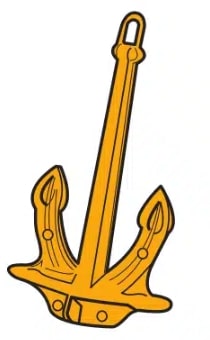
High Holding Power Anchors
- Delta Anchor: Known for its strong hold in various seabeds, ideal for yachts and smaller vessels.
- Bruce Anchor: Frequently used in offshore operations, thanks to its ability to reset quickly if dislodged.
- Pool Anchor: A certified HHP anchor used in large vessels and offshore rigs.
Choosing the right anchor is a pivotal decision for maritime safety and efficiency. While Stockless provides reliability and ease of use for large vessels, high holding power delivers unparalleled stability for demanding conditions. By considering your vessel type, operational requirements, and environmental factors, you can make an informed purchase that enhances your maritime operations.
